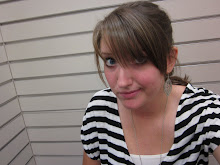The large, ambitious set for “Playtime” was created especially for the film. Each towering building and major skyscraper was designed to create this mood of modernity through the sharp lines, the unusual shapes, and the bleak but bright colors. This simultaneously makes the audience feel both that this is something artificial and out of the ordinary, but also makes them feel like they are there experiencing it. There aren’t camera tricks to make things seem enlarged, it is actually designed that big so it has a much more overwhelming effect. The largeness of the effect almost seems to communicate that the presence of the artificial (including these buildings) is more important than the presence of the people themselves. The people are so small and insignificant in comparison.
The film frequently incorporates framing techniques that are unique to “Playtime” and Tati’s style. This is most noticeable in two scenes. In the office scene, every desk is surrounded by a box, or cubicles, as we now know them. This represents the closed off nature of the society and once again the dominance of the architecture over the people. Later, when Monsieur Hulot goes to an apartment, the entirety of the scene is filmed from the exterior. It looks like TV sets piled on top of one another with glimpses into private life, but with the lack of dialogue, nothing is learned beyond the surface action. This was a fascinating technique that really helped employ this theme of the decline of human interaction. There are some amusing physical gags particularly with our protagonist, but nevertheless you can’t help but feel that you are watching a TV show and all you will ever get is that one frame of reference – nothing deeper.
Lastly, the color scheme largely influences the mood. It is filmed in color, but still gives off the impression that it is black and white with its use of grey, blue, black, and white. Most of the buildings are white, while sharp contrasts are provided with black lines and black furniture. However, in most scenes there is some other color present. In the office, there is a man with a bright blue clipboard. Your eyes can’t help but follow him as the color stands out amongst the bleak. This, again, reinforces that technology and design dominate over the people, even though our eyes follow what little life we can find. The color also changes from beginning to end and other colors are much more apparent by the end than by the beginning symbolizing society’s triumph over the impending technology.
Though the plot (or lack thereof) is difficult to follow, this is a story that can be understood by paying close attention to these subtle cues created and manipulated by the set itself. In “Playtime,” the set is just as much a character as the actors are.
All the analysis aside (did you guys really make it through all that?) This movie is pretty boring and has little to no redeeming entertainment value. I wouldn't recommend it to anyone unless you're looking for a little artistic reflection. 3/10


0 Comments